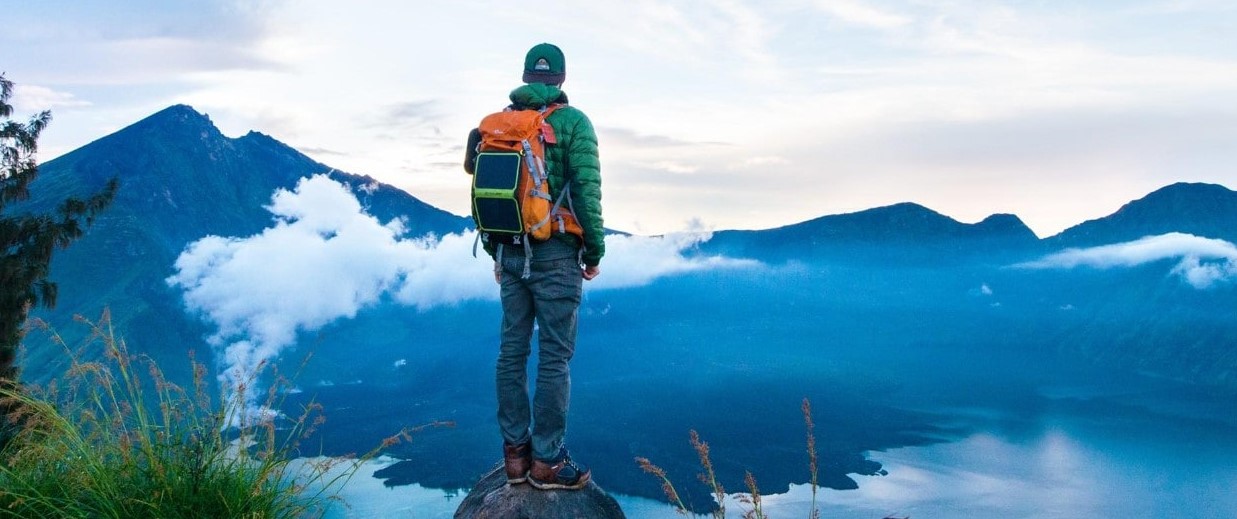Nari Flower: Discovering the Beauty of Unique Floral Species

Source:https://ilovetravelingandexploring.wordpress.com
The world of flowers is full of awe-inspiring diversity, with each species offering its own unique beauty and charm. Among these, the Nari flower stands out as one of the most captivating yet lesser-known blooms. Known for its vibrant colors, intricate structure, and distinct cultural significance, the Nari flower is a botanical treasure. In this article, we will delve into the fascinating world of the Nari flower—exploring its origins, characteristics, environmental benefits, and cultural importance. Whether you’re a botanist, a nature enthusiast, or simply curious about unique floral species, the Nari flower is sure to pique your interest.
The Origin and Habitat of the Nari Flower
The Nari flower is a species native to specific regions, often found in tropical and subtropical climates. Its exact origin varies, depending on the variety, but it is typically seen in parts of Asia, Africa, and South America. These regions offer the warm, humid environments that the Nari flower thrives in, with many varieties growing in forests, wetlands, and even cultivated gardens.
1. Botanical Classification and Varieties
The Nari flower belongs to a variety of plant families, and the most recognized species come from the genus Naria or closely related genera. The plant’s genus varies by location, but common varieties include the Naria splendens, Naria japonica, and Naria indica. Each of these species exhibits unique traits, such as differing petal shapes, color patterns, and growth habits.
The flower is often described as having five distinct petals that curve in an elegant manner, with a central stamen that is highly visible and often contrasts beautifully with the color of the petals. The most common colors of the Nari flower range from vibrant pinks and purples to yellows and whites, each variety boasting its own unique hue. The flowers themselves are usually medium-sized and bloom during specific seasons, typically in the spring and summer months.
2. Environmental Conditions for Growth
The Nari flower thrives best in well-drained soils that are rich in organic matter. It prefers areas that receive plenty of sunlight, although some species can adapt to partial shade. The flower’s growth is also highly dependent on consistent rainfall, as it needs moisture to maintain its delicate petals and vibrant colors.
Many species of Nari flower are also resilient to drought conditions, though they perform best in humid climates. Whether in the wild or cultivated in gardens, the flower is adaptable and can be found in a range of ecosystems, from tropical rainforests to coastal wetlands.
Characteristics and Features of the Nari Flower
The Nari flower is celebrated not only for its vivid appearance but also for its intricate floral anatomy and distinctive scent. Below, we break down the key characteristics that make the Nari flower so unique.
1. Petals and Color Variations
The petals of the Nari flower are its most striking feature. They are typically elongated and curve outward in a spiral-like pattern. Depending on the variety, these petals can have bold color gradients that shift from one hue to another, creating a mesmerizing effect. Some species of the Nari flower are known for their bi-colored petals, which alternate between two contrasting shades, adding to their visual appeal.
The color range is vast, with certain varieties displaying hues of deep purple, rich magenta, or golden yellow. These colors attract a variety of pollinators, including bees, butterflies, and birds, which play a significant role in the plant’s reproduction cycle.
2. Fragrance
One of the most alluring characteristics of the Nari flower is its fragrance. While it may not have the overpowering sweetness of other floral species, its delicate, earthy scent has a soft, refreshing quality that draws both humans and pollinators alike. The fragrance of the Nari flower is often described as subtle and floral, with hints of citrus or vanilla, making it a favorite among gardeners who appreciate flowers that not only look beautiful but also bring a pleasant aroma to their surroundings.
3. Cultural and Symbolic Importance
Beyond its physical beauty, the Nari flower holds significant cultural and symbolic meanings in various parts of the world. In many Asian cultures, the flower is associated with purity, longevity, and spiritual enlightenment. Its vibrant petals symbolize the beauty of life, while its long-lasting nature represents the endurance of the human spirit.
In other parts of the world, the Nari flower is seen as a symbol of love and affection. Its presence in festivals, religious ceremonies, and personal celebrations speaks to its deep-rooted importance in human culture. In some societies, the Nari flower is even believed to bring good luck and prosperity to those who plant it in their gardens.
The Environmental and Ecological Role of the Nari Flower
The Nari flower plays a vital role in the ecosystems where it thrives, contributing both aesthetically and ecologically. Its impact on the environment goes beyond just providing a beautiful spectacle for humans to enjoy.
1. Pollinator Support
As mentioned earlier, the Nari flower attracts a wide range of pollinators, including bees, butterflies, and even small birds. These pollinators are essential for the survival of many plant species, as they help transfer pollen between flowers, facilitating fertilization and seed production. In return, the Nari flower provides a rich nectar source that supports the health and well-being of these pollinators.
2. Habitat for Local Wildlife
In regions where the Nari flower grows naturally, it can serve as an important habitat for small insects and animals. The dense foliage of Nari plants often provides shelter and a safe space for various forms of wildlife, including smaller mammals and insects, contributing to the overall biodiversity of the area.
3. Erosion Control and Soil Health
In some regions, the roots of the Nari flower are used in erosion control. The plant’s roots help stabilize soil, preventing it from eroding during heavy rainfall or high winds. In addition, the organic matter from the flowers and leaves contributes to soil health, enriching the surrounding ecosystem and supporting other plant species.
The Nari flower is truly a testament to the beauty and complexity of nature. From its colorful petals and delicate fragrance to its cultural significance and ecological benefits, this unique floral species deserves a closer look. Whether you are a lover of flowers, a gardener, or simply someone seeking to appreciate the wonders of the natural world, the Nari flower is a must-see in any botanical exploration. Embrace the charm of this exceptional bloom, and discover the beauty that makes it a lasting symbol of nature’s intricate design.
Vespa How to Ride: Mastering the Art of Scooter Adventures

Source:https://png.pngtree.com
Vespa, a name synonymous with style, freedom, and a sense of adventure, has become an iconic symbol of scooter culture worldwide. Whether you’re cruising through city streets or exploring winding country roads, riding a Vespa offers a unique and thrilling experience. If you’ve recently gotten your hands on this classic scooter or are considering learning how to ride, you’re in the right place. In this article, we’ll explore everything you need to know about Vespa how to ride, from the basic techniques to the finer details of safe and enjoyable riding. By the end, you’ll be prepared to confidently embrace the scooter life and master the art of Vespa adventures.
Getting Started with Your Vespa: The Basics
Before diving into the intricacies of Vespa riding, it’s important to first understand the basic components of your scooter. The Vespa has a simple yet elegant design, which makes it user-friendly for both beginners and seasoned riders. Here’s a quick rundown of what you’ll need to know:
1. Understanding the Controls
- Throttle: The right-hand grip controls the throttle, which accelerates the scooter. A gentle twist will get you moving, while more pressure increases speed.
- Brakes: The Vespa has two brakes—front and rear. The front brake is controlled by the right lever, while the rear brake is controlled by the left lever. Understanding the balance between the two brakes is crucial for smooth and safe stopping.
- Gear: Most Vespas are automatic, which means you don’t need to worry about shifting gears. Simply twist the throttle to accelerate, and the scooter will adjust accordingly.
2. Starting the Engine
To start your Vespa, ensure the scooter is in neutral (you’ll see a green light indicating this on the dashboard). Press the ignition button and wait for the engine to start. Once it’s running, gently twist the throttle to begin your ride.
3. Mounting and Disembarking
When you’re ready to get on your Vespa, stand on the left side of the scooter. Hold the handlebars firmly, place your left foot on the footrest, and swing your right leg over the seat. Once seated, ensure both feet are placed firmly on the ground before you begin riding. To disembark, simply reverse the process and step off the scooter safely.
Learning the Essential Riding Techniques
Mastering the basic controls of your Vespa is just the beginning. To fully enjoy the freedom of scooter adventures, you must practice essential riding techniques that will ensure both safety and skill. Let’s break down these key aspects:
1. Balancing and Steering
At first, maintaining balance on a scooter can feel tricky. The key is to keep your body relaxed and centered over the scooter. Keep both hands on the handlebars and your feet firmly on the footrests. While riding, gently turn the handlebars to steer, making sure not to over-correct. If you lean into turns, the scooter will naturally follow your movement.
2. Acceleration and Deceleration
Getting the feel for acceleration and deceleration takes practice. When accelerating, it’s important to gradually increase the throttle, avoiding sudden twists that could cause jerky movements. Similarly, when decelerating, ease off the throttle slowly, and use the rear brake for smoother slowing. The front brake should be applied gently, as overuse can cause the scooter to tip forward.
3. Navigating Corners
Cornering is one of the most enjoyable aspects of Vespa riding, but it requires proper technique. As you approach a turn, reduce your speed, lean into the corner with your body, and gently steer the scooter in the desired direction. Avoid braking while turning, as this can cause instability. Instead, use the brakes before the turn and then coast through it.
4. Safe Riding Practices
As with any form of motorized transportation, safety is paramount. Always wear a helmet, gloves, and other protective gear. Additionally, riding defensively and staying alert for road hazards is essential. Be mindful of traffic and always signal your intentions when changing lanes or turning. If riding at night, ensure your lights are functioning and wear reflective gear for visibility.
Advanced Riding Techniques: Taking Your Vespa Skills to the Next Level
Once you’re comfortable with the basics, it’s time to take your Vespa riding to the next level. Advanced techniques can make your scooter adventures even more thrilling and efficient. Here are a few advanced tips to help you become a more skilled rider:
1. Riding in Different Weather Conditions
The ability to adapt to different weather conditions is crucial for any rider. In rainy or wet conditions, always ride cautiously, as the road may be slippery. Reduce your speed, avoid sharp turns, and give yourself extra space when stopping. In windy conditions, keep a firm grip on the handlebars and maintain a steady speed to prevent being pushed off course.
2. Long-Distance Riding
Long-distance Vespa adventures can be incredibly rewarding, but they require careful planning. Make sure your scooter is in good working order before embarking on longer rides, and plan your route in advance. Pack essentials like water, snacks, and a small toolkit, and take frequent breaks to avoid fatigue.
3. Riding with a Passenger
Riding with a passenger is a unique experience that requires extra skill. Always check the weight capacity of your Vespa and make sure your passenger is seated comfortably with their feet on the footrests. When accelerating, decelerating, or turning, communicate with your passenger and adjust your movements accordingly.
Now that you’ve learned the basics and some advanced techniques, you’re ready to embrace the freedom of the open road with your Vespa. Whether you’re exploring the city or venturing into the countryside, the skills you’ve learned will help you enjoy every moment of your ride. Remember, Vespa how to ride is as much about confidence and practice as it is about technique. So keep honing your skills, stay safe, and most importantly, enjoy the incredible journey ahead. Your Vespa adventures await!
Famous Hot Chocolate Paris: Indulging in Parisian Cocoa Delights

Source : https://www.parisperfect.com
Paris is renowned for its rich history, beautiful architecture, and, of course, its world-class cuisine. Among the city’s most beloved treats is the famous hot chocolate Paris, a decadent and comforting indulgence that has been a part of the city’s culinary culture for centuries. In a city known for its cafés, pastry shops, and chocolate boutiques, the pursuit of the perfect cup of hot chocolate has become a popular activity for both locals and tourists alike. Whether you’re warming up during a chilly winter day or simply indulging in a luxurious cocoa experience, Paris offers a variety of locations where you can taste some of the finest and most famous hot chocolates in the world. In this guide, we will explore the best spots in Paris to enjoy this delicious beverage and what makes each one a unique experience.
1. The Art of Hot Chocolate in Paris
Hot chocolate, or chocolat chaud, has a long and rich history in Paris. The French have long had a reputation for creating some of the world’s finest chocolates, and the Parisian approach to hot chocolate is no different. Unlike the watery, diluted versions found in other parts of the world, famous hot chocolate Paris is thick, velvety, and intensely flavored. It’s often made with high-quality dark chocolate and a combination of milk and cream, giving it a rich, luxurious texture that makes it more of an experience than just a drink.
Historically, hot chocolate in Paris was reserved for the elite, served in the grand cafés and salons of the city. As the drink became more popular in the 19th and 20th centuries, it became a staple in Parisian cafés, where it’s enjoyed with a pastry or a simple croissant. Today, it remains a quintessential part of the Parisian café culture, with countless chocolatiers and cafés offering their own take on the beloved treat.
What sets the famous hot chocolate Paris apart from other versions is the attention to detail and the focus on using the finest ingredients. High-quality chocolate is essential, and many cafés use locally sourced, artisanal chocolate for their hot chocolate creations. The drink is often served in small, elegant cups, with whipped cream or a dollop of crème fraîche on top, elevating the experience into something truly indulgent.
2. Best Places to Enjoy Famous Hot Chocolate in Paris
1. Café de Flore
One of the oldest and most iconic cafés in Paris, Café de Flore is a must-visit for anyone seeking the perfect cup of famous hot chocolate Paris. Located in the heart of Saint-Germain-des-Prés, this historic café has been a gathering place for intellectuals, artists, and writers for decades. Here, you can enjoy a steaming cup of chocolat chaud served with a side of freshly baked pastries while watching the world go by. The hot chocolate at Café de Flore is known for its rich, smooth texture and deep chocolate flavor, making it one of the best places in Paris to indulge in this sweet treat.
2. La Maison de la Chocolat
For those looking for a more refined hot chocolate experience, La Maison de la Chocolat is the place to go. This luxury chocolate shop, known for its exquisite artisanal chocolates, offers a hot chocolate that is nothing short of exceptional. The hot chocolate here is made with the finest cocoa beans and carefully crafted to achieve the perfect balance between richness and smoothness. Served with a side of delicate whipped cream, it’s a sophisticated take on the classic drink. Whether you choose to enjoy it in their sleek, modern café or take it to go, La Maison de la Chocolat promises an unforgettable experience for any chocolate lover.
3. Angelina
One of the most famous spots for hot chocolate in Paris is Angelina, a lavish tearoom located near the Tuileries Gardens. Known for its rich and decadent chocolat chaud, Angelina has been serving its signature drink since 1903. The hot chocolate here is famously thick and luxurious, often described as “drinking melted chocolate.” It’s served in a large, elegant cup with a side of whipped cream, allowing you to customize your drink’s creaminess to your liking. If you’re visiting Paris, a stop at Angelina is a must for anyone seeking an indulgent and iconic hot chocolate experience.
4. Ladurée
Ladurée, famous for its macarons and beautiful patisseries, also offers an excellent version of the famous hot chocolate Paris. Known for its elegant atmosphere and charming décor, Ladurée is the perfect spot for sipping on a luxurious cup of hot chocolate. Made with premium chocolate and cream, Ladurée’s hot chocolate is velvety and smooth, with a rich, intense flavor that pairs perfectly with the delicate pastries served in the café. Whether you’re enjoying it at their flagship location on the Champs-Élysées or one of their other charming Parisian cafés, Ladurée provides an exceptional hot chocolate experience.
5. Pierre Marcolini
Pierre Marcolini is another luxury chocolatier that offers an exceptional hot chocolate experience. Known for his innovative and refined approach to chocolate, Marcolini’s hot chocolate is made with the finest cocoa beans and crafted to create a smooth and indulgent drink. The hot chocolate here is rich but not overwhelming, with a depth of flavor that comes from the careful selection of ingredients. Whether you enjoy it as part of an afternoon tea or as a standalone treat, Pierre Marcolini’s hot chocolate is a must-try for anyone serious about cocoa.
3. The Parisian Hot Chocolate Experience: More Than Just a Drink
Hot chocolate in Paris is more than just a drink—it’s an experience. Whether you’re sitting at a historic café, enjoying the elegance of Ladurée or Angelina, or savoring the craftsmanship of a chocolatier like Pierre Marcolini, the ritual of drinking hot chocolate in Paris is something to be savored. It’s a moment to slow down, take in the ambiance of the café, and enjoy the luxury of high-quality chocolate.
In Paris, hot chocolate is often paired with a selection of pastries, from delicate croissants to the famous macarons. Many cafés also offer a range of other hot drinks, but the hot chocolate is always the star of the show. The smooth, velvety texture and intense flavor make it the perfect indulgence, whether you’re seeking comfort on a cold day or treating yourself to a luxurious break in the city.
When it comes to enjoying famous hot chocolate Paris, the experience is just as important as the taste. The cafés and chocolatiers in Paris go above and beyond to create an atmosphere of sophistication and elegance, where you can indulge in one of the finest drinks in the world.
In conclusion, if you’re a fan of hot chocolate, experiencing the famous hot chocolate Paris is a must-do on your next visit to the City of Light. From the iconic, rich chocolate at Café de Flore to the luxurious creations at La Maison de la Chocolat and Pierre Marcolini, Paris offers a diverse array of options for indulging in this beloved drink. Whether you’re sipping it in a historic café, enjoying it with a pastry, or savoring it in the warmth of a chic chocolatier, famous hot chocolate Paris promises to be an unforgettable experience. So, the next time you find yourself in Paris, be sure to treat yourself to a cup of this Parisian cocoa delight!
How to Get to Bora Bora from Tahiti: Your Island-Hopping Guide
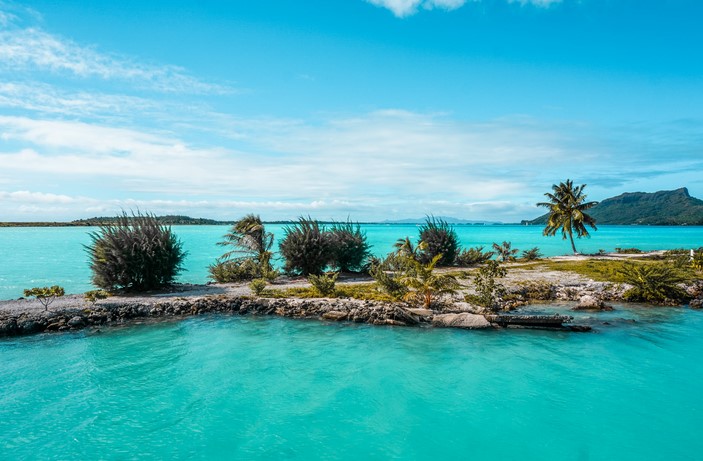
Source : https://www.plantifultravels.com
Bora Bora, often referred to as the “Pearl of the Pacific,” is one of the most sought-after travel destinations in the world. Known for its crystal-clear waters, white-sand beaches, and luxurious resorts, this island in French Polynesia is a dream getaway for many. But before you can relax in the stunning bungalows over the lagoon or swim with the vibrant marine life, one must first figure out how to get to Bora Bora from Tahiti. Since Tahiti is the main gateway to French Polynesia, understanding the best ways to travel from the island of Tahiti to Bora Bora is essential for planning your perfect island-hopping adventure. In this guide, we’ll break down all the options for getting from Tahiti to Bora Bora, offering helpful tips for a seamless and enjoyable journey.
1. The Basics: Understanding the Journey from Tahiti to Bora Bora
Tahiti, the largest island in French Polynesia, serves as the main entry point for most international travelers. Papeete, the capital of Tahiti, is home to the international airport, Faa’a Airport, which is where flights to and from various countries are handled. Bora Bora, located about 230 kilometers (143 miles) to the northwest of Tahiti, is a small island in the Society Islands archipelago and can be reached by air or by boat. However, air travel is the most common and convenient option for most visitors.
When planning your trip to Bora Bora, it’s important to note that there is no direct international flight to Bora Bora. All international flights typically land in Tahiti first, so you’ll need to transfer to a domestic flight to reach Bora Bora. Thankfully, there are several airlines that operate flights between the two islands, making the trip relatively straightforward.
2. The Most Common Ways to Travel from Tahiti to Bora Bora
Domestic Flights: Fast and Convenient
The most common and fastest way to travel from Tahiti to Bora Bora is by domestic flight. The flight takes approximately 50 minutes, providing stunning aerial views of the islands as you make your way from the bustling island of Tahiti to the serene beauty of Bora Bora. The main airline servicing this route is Air Tahiti, which operates multiple daily flights from Faa’a Airport in Papeete (Tahiti) to Motu Mute Airport in Bora Bora.
Air Tahiti offers various classes of service, ranging from economy to business, and passengers can expect a smooth and comfortable ride. The flights typically offer stunning views of the islands below, and you may even get a glimpse of Bora Bora’s signature lagoon and coral reefs before you land. While these flights are short, they are extremely popular, so booking your tickets in advance is highly recommended, especially if you are traveling during peak tourist seasons.
The check-in process for these flights is generally straightforward. After arriving at Faa’a Airport in Tahiti, you’ll head to the domestic terminal for your flight to Bora Bora. It’s important to note that while the flights are relatively short, travelers should plan to arrive at the airport at least an hour before departure to allow time for check-in and security procedures.
Scenic Air Travel: Helicopter or Seaplane Rides
For travelers looking to experience something more unique, helicopter or seaplane rides are an exciting alternative to the standard domestic flights. Helicopter tours can be arranged through local companies, offering breathtaking aerial views of Tahiti, Moorea, and Bora Bora during your flight. While these experiences are typically more expensive than standard flights, they provide a once-in-a-lifetime perspective of the islands.
Another scenic air travel option is the seaplane ride, operated by companies like Air Tahiti Nui or Transair. These seaplanes offer a direct route from Tahiti to Bora Bora, and the flight time is similar to that of a regular domestic flight. The difference, however, lies in the extraordinary experience of taking off and landing on the water, as well as the chance to enjoy panoramic views of the islands and turquoise lagoons.
Though these options offer a more exclusive experience, they are limited in availability and may come at a premium price. Nonetheless, for travelers seeking adventure and stunning visuals, this could be the perfect option to consider.
Ferry and Boat Services: A Slower, But Scenic Alternative
While domestic flights are the most popular option, ferry services from Tahiti to Bora Bora do exist. These ferries are a slower alternative to air travel, but they offer a more relaxed and scenic way to travel between the islands. A ferry ride from Tahiti to Bora Bora typically takes between 6 to 8 hours, depending on weather conditions and sea currents.
Ferry travel is not as commonly used by tourists, as it is far slower and less convenient than flying, but it can be a more affordable choice for those on a budget or those seeking a unique experience. The ferry ride allows travelers to enjoy the open ocean and island scenery in a more leisurely fashion, and it’s a great option for those who have time to spare and want to experience the journey in a different way.
Cruises: Combining Travel with Leisure
Another option to consider when traveling between Tahiti and Bora Bora is a cruise. Several cruise lines offer island-hopping itineraries that include both Tahiti and Bora Bora as key stops. These cruises typically last several days and provide a more leisurely and luxurious way to travel between the islands, with multiple excursions and activities included.
Cruises offer the advantage of combining travel with the opportunity to explore multiple islands and immerse yourself in the Polynesian culture, all while enjoying the amenities and luxury of a cruise ship. This option is ideal for travelers who want to see more of the region and enjoy the comfort of onboard facilities.
3. Things to Consider When Traveling from Tahiti to Bora Bora
When planning your trip, there are several important factors to consider to ensure a smooth and enjoyable journey.
- Booking in advance: Due to the popularity of Bora Bora, flights and ferries can fill up quickly, especially during peak tourist seasons (April through October). To secure the best rates and ensure availability, it’s a good idea to book your transportation ahead of time.
- Seasonal weather: While the weather in French Polynesia is generally warm year-round, the rainy season runs from November to March. The best time to travel to Bora Bora is during the dry season, from May to October, when the weather is sunny and pleasant.
- Travel time: While the flight from Tahiti to Bora Bora is relatively short, if you opt for a ferry or cruise, the journey can take much longer. Make sure to plan accordingly, especially if you have limited time.
- Luxury transfers: For those staying at high-end resorts in Bora Bora, many luxury properties offer private boat transfers from the airport to their facilities. These transfers provide a seamless and upscale experience for travelers looking for added convenience and luxury.
In conclusion, how to get to Bora Bora from Tahiti is a question easily answered with several convenient options. Whether you choose a quick and easy domestic flight, an exciting helicopter ride, or a leisurely ferry, getting to Bora Bora from Tahiti is part of the adventure. The journey itself offers a unique opportunity to take in the beauty of French Polynesia’s islands, from the sparkling waters to the lush landscapes. No matter which mode of transport you choose, the experience of arriving in Bora Bora, one of the world’s most beautiful islands, will be unforgettable. Happy travels, and enjoy your island-hopping adventure!
Snow Wall Japan: Witnessing Natural Wonders in the Land of the Rising Sun
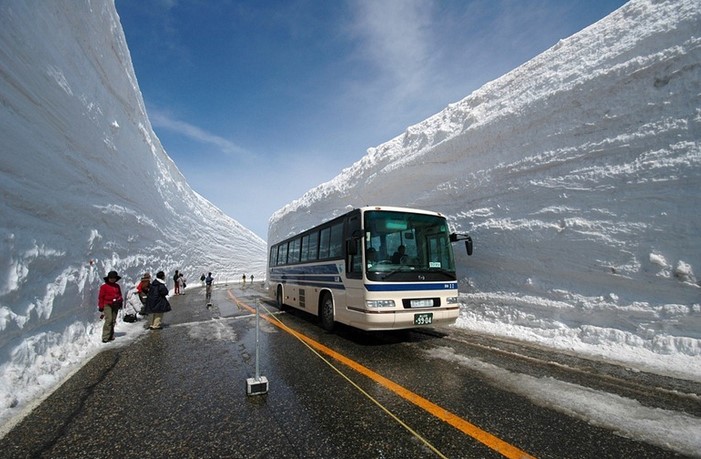
Source : https://blogger.googleusercontent.com
Japan is a country known for its stunning natural landscapes, from the snow-capped peaks of the Japanese Alps to the serene beauty of its forests and gardens. Among its many natural wonders, one of the most captivating sights is the Snow Wall Japan, a phenomenon that draws tourists from all over the world. This awe-inspiring spectacle occurs every spring in the mountainous region of the Japanese Alps, where towering walls of snow, some over 15 meters high, line the famous Tateyama Kurobe Alpine Route. The Snow Wall Japan is a unique and extraordinary natural occurrence that combines the beauty of winter with the promise of warmer days, offering visitors an unforgettable experience. This article delves into the Snow Wall Japan, exploring how it forms, the best time to visit, and why it has become a must-see attraction for travelers seeking to witness the majestic power of nature in the Land of the Rising Sun.
1. The Formation of the Snow Wall: Nature’s Masterpiece
The Snow Wall Japan is created through the unique geographical and climatic conditions of the region, particularly along the Tateyama Kurobe Alpine Route. Every year, heavy snowfall accumulates during the winter months, and the region experiences long, cold winters, which leads to the formation of massive snowbanks. As spring approaches and temperatures rise, the snow begins to melt, but in the higher altitudes of the Alps, it remains packed and frozen. Workers and machinery clear the route for travelers, creating massive, vertical walls of snow along the pathway.
The height of these snow walls can vary depending on the snowfall during the winter season, but on average, they stand between 10 to 20 meters high, with the tallest reaching up to 25 meters in particularly heavy years. These towering walls of snow create a surreal, almost otherworldly experience for those who walk or drive along the Alpine Route, as the walls appear to stretch endlessly on either side. Visitors are able to traverse the route by bus, and during the peak season, they can walk along paths that allow them to get up close and personal with the snow walls, often touching or even standing alongside them.
The creation of the Snow Wall Japan is a true natural wonder, made all the more impressive by the fact that it occurs in a relatively small window each year. The snow usually begins to melt in late April, with the Snow Wall remaining intact until late June. This limited timeframe makes the experience all the more special, as visitors can witness the immense power and beauty of nature at its most raw and untamed.
2. The Best Time to Experience Snow Wall Japan
Timing is crucial when planning a trip to witness the Snow Wall Japan. Since the phenomenon occurs only during the spring months, it’s important to know when to visit to ensure you get the best possible experience. The peak season for the Snow Wall is typically between mid-April and late June, with the walls at their highest and most impressive in early May. However, the snow conditions can vary each year depending on the amount of snowfall, so it’s always a good idea to check ahead for the exact dates when the walls are expected to be open to visitors.
The snow walls are accessible via the Tateyama Kurobe Alpine Route, which is a scenic and well-maintained path that connects several transport modes, including buses, cable cars, and a ropeway. The route itself is an attraction, offering stunning views of the surrounding mountains and valleys. As visitors make their way through the Alpine Route, they can take in not just the snow walls, but also breathtaking landscapes of jagged peaks, crystal-clear lakes, and vibrant alpine meadows.
While the Snow Wall Japan is the main draw, the surrounding area also offers a wealth of other experiences for nature enthusiasts. Hiking trails, hot springs, and picturesque villages are all part of the charm of this region. The Tateyama mountain range, which serves as the backdrop to the Snow Wall, is a popular destination for hiking and mountaineering, and the Kurobe Dam, one of Japan’s largest and most impressive dams, is nearby and worth a visit.
Practical Tips for Visiting the Snow Wall Japan
- Dress warmly: Despite being in the spring season, temperatures along the Alpine Route can still be quite chilly due to the high altitudes, so be sure to pack warm clothing.
- Book in advance: The Snow Wall experience is incredibly popular, especially during peak season. It’s a good idea to book your tickets for the Alpine Route and accommodations ahead of time.
- Check snow conditions: Snowfall can vary each year, so keep an eye on updates regarding snow wall height and accessibility. Some years may have higher walls, while others may have lower ones.
- Take your time: The journey along the Alpine Route can take several hours, so give yourself plenty of time to enjoy the views and stop at various scenic points along the way.
3. Why Snow Wall Japan is a Must-See Attraction
The Snow Wall Japan is not only a natural wonder, but it also offers a unique and surreal experience that is unlike any other. For many, seeing the towering walls of snow in person is a bucket-list item, as the spectacle of nature’s raw beauty is awe-inspiring. Whether you’re an avid photographer hoping to capture the perfect shot or a traveler looking to connect with nature, the Snow Wall provides an unforgettable experience that stays with you long after the visit.
One of the most appealing aspects of the Snow Wall Japan is the ability to walk alongside or even touch the snow walls, which creates a sense of intimacy with nature that many other natural wonders don’t offer. The feeling of standing next to a massive wall of snow, knowing it’s the result of months of snowfall and natural forces, is an incredibly humbling experience. The sheer scale of the snow walls, combined with the alpine backdrop, creates a sense of grandeur that is unmatched.
Additionally, the Snow Wall is not just a visual marvel—it is a testament to the resilience and power of nature. The fact that these walls of snow remain intact even as the surrounding weather begins to warm up showcases the persistence of winter and the incredible natural processes that occur in the high-altitude regions of Japan. For visitors, it’s an opportunity to witness one of nature’s most impressive feats and reflect on the beauty of the natural world.
In conclusion, Snow Wall Japan offers a remarkable opportunity to witness a stunning natural phenomenon in the heart of the Japanese Alps. This awe-inspiring sight, accessible along the Tateyama Kurobe Alpine Route, is a must-see for anyone visiting Japan during the spring season. The Snow Wall Japan is not only a spectacular display of nature’s power, but it also allows visitors to experience a rare and unforgettable encounter with one of the world’s most beautiful snow spectacles. Whether you’re a nature lover, an adventure seeker, or simply someone looking to be amazed by the wonders of the world, witnessing the Snow Wall Japan is an experience that will stay with you forever.
Magnolia Bakery Central Park South: Delightful Treats in a Central Location
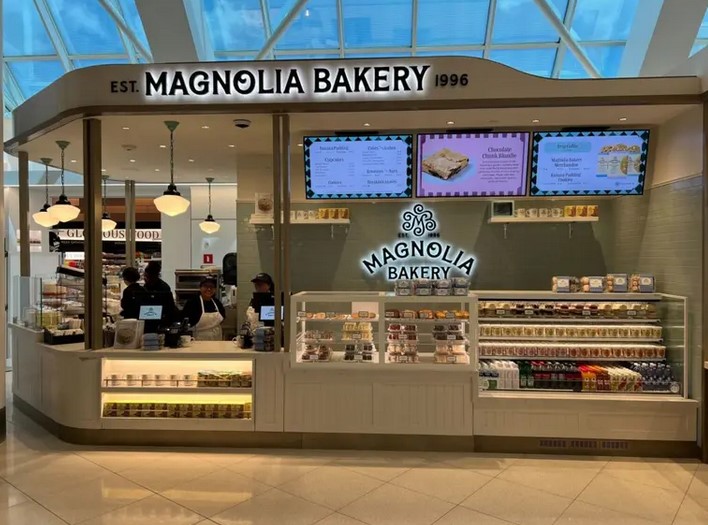
Source : https://thumbs.6sqft.com
Located in one of New York City’s most iconic neighborhoods, Magnolia Bakery Central Park South offers a blend of nostalgic charm and delectable baked goods in a central, easily accessible location. Famous for its classic American desserts, Magnolia Bakery has become a must-visit destination for both locals and tourists who seek the perfect balance of comfort and indulgence. Whether you’re looking for a sweet treat to accompany your stroll through Central Park or a special dessert to bring home, this beloved bakery delivers an unforgettable experience. In this article, we’ll explore what makes Magnolia Bakery Central Park South a favorite among dessert lovers, what to expect during your visit, and why this bakery stands out in the competitive NYC food scene.
1. A Storied History and A Timeless Appeal
Magnolia Bakery first opened its doors in 1996 in the West Village, quickly gaining a devoted following for its homemade, old-fashioned baked goods. The Central Park South location, which opened years later, brought the bakery’s signature charm and delicious treats to an even broader audience. Situated near the heart of Manhattan’s most visited green space, this bakery is perfectly positioned to cater to those who want to grab a quick bite on the go or sit and relax with a cup of coffee while taking in the bustling energy of the city.
What makes Magnolia Bakery so special is its commitment to quality ingredients and traditional baking techniques. Many of the recipes have been passed down through generations, adding a personal touch to every batch of cupcakes, pies, and cookies. Despite its global expansion, Magnolia Bakery has remained committed to its humble roots, ensuring each item is made with care and attention to detail.
For many, the experience of visiting Magnolia Bakery Central Park South isn’t just about grabbing a treat—it’s about relishing in the warm, inviting atmosphere that the bakery provides. The charming, retro-style decor and friendly staff create an ambiance that makes visitors feel at home, whether they’re sitting at a table or taking their treats to go. It’s a place where every bite feels like a moment of nostalgia, invoking fond memories of baking at home or enjoying a sweet dessert with loved ones.
2. The Must-Have Treats at Magnolia Bakery Central Park South
When it comes to the offerings at Magnolia Bakery Central Park South, there’s something for everyone. From the bakery’s signature cupcakes to its iconic banana pudding, Magnolia Bakery excels at making classic American treats that appeal to all ages. Let’s take a closer look at some of the best offerings that make this location a fan favorite.
Cupcakes
Magnolia Bakery’s cupcakes are undoubtedly some of the best in the city. Known for their rich, moist cake and creamy frosting, these cupcakes come in a variety of flavors, including the iconic vanilla and chocolate options. But the true star is the “Magnolia Vanilla” cupcake, which boasts a perfect balance of sweetness and lightness, topped with a swirl of rich buttercream frosting. Whether you prefer a simple vanilla or a more decadent flavor like red velvet or chocolate buttercream, these cupcakes are a must-try for anyone visiting the bakery.
Banana Pudding
A true Magnolia Bakery classic, banana pudding is an irresistible treat that continues to captivate customers. Layers of fresh bananas, rich vanilla pudding, and a generous amount of whipped cream create the perfect dessert for those who love creamy, comforting sweets. This dessert has become so popular that it’s now considered a staple at the bakery, drawing in crowds from all corners of New York City. Whether you choose to enjoy it on-site or take it home to savor later, the banana pudding is undeniably one of the bakery’s most famous offerings.
Cakes and Pies
For those who prefer a larger indulgence, Magnolia Bakery Central Park South offers a variety of cakes and pies. The cake options range from classic chocolate and vanilla to more inventive flavors like Italian cream or carrot cake, while the pies feature traditional options like apple and pecan, as well as seasonal specials. These desserts are perfect for celebrations, family gatherings, or simply treating yourself to something extra special.
Cookies and Bars
Magnolia Bakery also offers a selection of cookies and dessert bars, perfect for those who want a smaller sweet treat. From chewy chocolate chip cookies to crumbly shortbread and decadent dessert bars, there’s no shortage of delicious options. These bite-sized indulgences are ideal for taking on the go or enjoying with a cup of coffee.
Seasonal Treats
In addition to its everyday offerings, Magnolia Bakery Central Park South also introduces seasonal treats that are perfect for holidays or special occasions. From festive cupcakes decorated for Christmas to pumpkin-flavored desserts in the fall, the bakery celebrates the changing seasons with a rotating menu of seasonal delights.
3. Why Magnolia Bakery Central Park South is a Must-Visit Spot
Magnolia Bakery Central Park South’s central location makes it an ideal stop for tourists and locals alike, offering an easy and convenient place to indulge in something sweet after a walk through Central Park or a busy day of sightseeing. However, it’s not just the location that makes it so popular—it’s the atmosphere, the service, and the high-quality baked goods that truly set this bakery apart.
Perfect for Tourists
The bakery’s proximity to Central Park makes it an excellent choice for tourists who are exploring the park and want to take a break or grab a snack. Whether you’re stopping by after visiting the Central Park Zoo, taking a bike ride through the park, or simply enjoying the outdoors, Magnolia Bakery offers a cozy spot to relax and recharge with a treat. It’s also a great location to pick up a dessert to enjoy during a picnic in the park.
A Local Favorite
For locals, Magnolia Bakery Central Park South is a beloved neighborhood institution. Whether it’s for a quick snack or a celebratory cake for a special occasion, this bakery provides consistently excellent service and high-quality treats. The bakery also has a loyal customer base that appreciates the familiar, comforting offerings that never go out of style.
Conclusion: A Sweet Stop in the Heart of Manhattan
In conclusion, Magnolia Bakery Central Park South is a must-visit destination for anyone seeking delicious, high-quality desserts in a central location. Whether you’re a first-time visitor to New York City or a longtime local, this bakery offers a variety of mouthwatering treats that cater to all tastes and preferences. From the signature cupcakes to the famous banana pudding, each dessert is crafted with care and attention to detail, making every bite a memorable experience. If you’re in the area, be sure to stop by Magnolia Bakery Central Park South to indulge in a delightful treat—your sweet tooth will thank you!
Best Cookies Los Angeles: Satisfying Your Sweet Tooth in the City of Angels

Source : https://mir-s3-cdn-cf.behance.net
Los Angeles is a city renowned for its vibrant food scene, and among the plethora of culinary delights, one treat stands out—cookies. Whether you’re a local or visiting, the search for the best cookies Los Angeles has to offer can be both exciting and overwhelming. From classic chocolate chip to innovative new flavors, LA’s cookie shops have something for every sweet tooth. This article explores some of the most popular and unique cookie spots in the city, offering a guide to help you find the best cookies in Los Angeles and satisfy your cravings with every bite.
1. The Rise of Cookie Culture in Los Angeles
Los Angeles has always been at the forefront of food trends, and its cookie scene is no exception. Over the past few years, the city has seen an explosion of artisanal cookie shops, each offering something different from the last. The demand for gourmet and high-quality cookies has given rise to a new wave of bakeries that use locally sourced ingredients, experiment with bold flavors, and push the boundaries of what a cookie can be.
One of the reasons for this surge in popularity is the city’s diversity. With its melting pot of cultures, Los Angeles offers a unique fusion of flavors that can be found in many of its cookie recipes. From spicy Mexican-inspired cookies to decadent treats that combine Asian and American ingredients, LA’s cookie shops are known for creativity and innovation.
Furthermore, the rise of Instagram culture has played a significant role in the popularity of these cookies. People love sharing photos of their delicious finds, which has allowed small, independent bakeries to reach wider audiences. As a result, many of the best cookies Los Angeles has to offer are not only about taste but also about presentation.
2. Must-Visit Cookie Spots in Los Angeles
When searching for the best cookies in Los Angeles, there are several places you must not miss. Each bakery brings something distinct to the table, ensuring that you’ll find a cookie that hits the spot.
Milk Bar
Milk Bar, the brainchild of renowned pastry chef Christina Tosi, has become a favorite among cookie lovers. Famous for its Compost Cookie, Milk Bar combines salty, sweet, and savory ingredients such as pretzels, potato chips, and coffee grounds, creating an irresistible flavor profile. The cookies here are thick, chewy, and packed with texture, offering a unique experience that distinguishes them from other bakeries in LA.
Cookie Good
Located in Santa Monica, Cookie Good is another top contender for the title of best cookies Los Angeles has to offer. With a rotating menu that includes innovative flavors like S’mores and Brookie (a mix of brownies and cookies), Cookie Good takes its inspiration from nostalgic childhood treats while giving them a sophisticated twist. The cookies are baked fresh daily and are known for their rich, gooey center and perfectly crispy edges.
Sweet Lady Jane
For those seeking classic, no-frills cookies, Sweet Lady Jane in West Hollywood delivers. Their signature Chocolate Chip Cookie is a crowd favorite—crunchy on the outside with a soft, gooey interior filled with premium chocolate. Sweet Lady Jane’s approach to baking is all about simplicity, using the finest ingredients to create an authentic cookie experience that brings comfort and joy.
The Cookie Joint
This West LA-based bakery offers some of the best oversized cookies you’ll find in the city. Known for their creative cookie flavor combinations, such as the Samoa-inspired cookie and the Dulce de Leche cookie, The Cookie Joint is a must-visit for anyone looking to indulge in something sweet and unique. These cookies are baked to perfection, offering an extra-large serving of deliciousness with every bite.
Dots Cupcakes and Cookies
Dots Cupcakes and Cookies is famous for their decadent cookies that are as beautiful as they are delicious. Their signature cookie, the Dottie, features a thick layer of chocolate chips, caramel, and sea salt. The balance of flavors is perfect, and the texture is soft, chewy, and melt-in-your-mouth. With several locations around LA, this is one cookie shop you don’t want to miss.
3. Trends and Innovations in Los Angeles Cookie Scene
The cookie scene in Los Angeles has evolved far beyond traditional recipes. Today, many cookie shops are focusing on innovation and embracing new trends to cater to the diverse tastes of the city’s residents.
Vegan and Gluten-Free Cookies
With the growing demand for dietary restrictions, many bakeries in LA now offer vegan and gluten-free cookies that don’t compromise on taste. These cookies are made with alternative ingredients like almond flour, coconut oil, and dairy-free chocolate, ensuring that those with food sensitivities can still indulge in the sweet satisfaction of a fresh-baked cookie.
Cookie Ice Cream Sandwiches
One of the hottest trends in LA right now is the cookie ice cream sandwich. A creative twist on a classic dessert, cookie shops are now serving scoops of gourmet ice cream nestled between two giant cookies. These sandwiches allow for endless flavor combinations, and they have become a popular treat for those looking to elevate their cookie experience.
Cookie Bars
Another innovative trend in the LA cookie scene is the rise of cookie bars—thick, chewy, and often loaded with a mix of ingredients like nuts, chocolate chunks, and even candy pieces. These cookies are baked in large pans and cut into squares, offering a portable and convenient way to enjoy a cookie without the mess of crumbling.
Los Angeles is undoubtedly a city that satisfies the sweet tooth in every way imaginable, and the quest for the best cookies Los Angeles has to offer is an adventure worth taking. From gourmet cookie shops to new-age trends like cookie ice cream sandwiches and cookie bars, there’s something for every flavor preference. Whether you crave classic chocolate chip cookies, a twist on an old favorite, or a vegan treat, LA’s cookie scene is sure to delight. So, next time you find yourself in the City of Angels, make sure to explore its many cookie destinations to discover your own favorite cookie haven.
Little Kyoto: Discovering Charming Kyoto-esque Towns Outside Kyoto
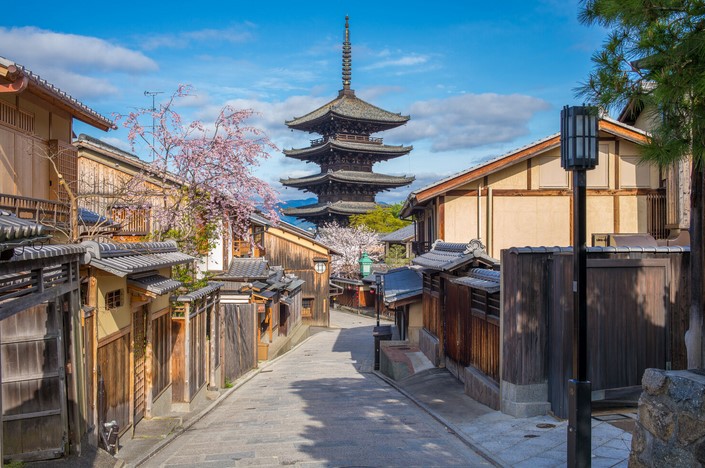
Source : https://media.digitalnomads.world
Kyoto, Japan’s ancient capital, is known for its beautiful temples, traditional tea houses, and picturesque streets lined with wooden machiya houses. While Kyoto itself remains a top tourist destination, there are several towns and regions outside the city that offer a similar atmosphere and charm. These places, often referred to as “Little Kyoto,” provide a more peaceful and less crowded experience, while still maintaining the authentic beauty and cultural heritage that makes Kyoto so special. In this article, we will explore some of the most captivating Little Kyoto towns and what makes them stand out as perfect alternatives to the famous city of Kyoto.
What Makes a Town “Little Kyoto”?
The term “Little Kyoto” is often used to describe towns or areas that share characteristics with Kyoto, including the preservation of traditional Japanese culture, historic architecture, and beautiful natural landscapes. These towns are typically known for their quiet, scenic beauty, with an emphasis on maintaining old-world charm through preserved wooden buildings, tranquil gardens, and serene waterways. While these towns may not have the same level of historical significance as Kyoto, they offer a similar atmosphere, and many are nestled in scenic areas that are perfect for a peaceful getaway.
Key Features of “Little Kyoto” Towns
- Traditional Architecture: Like Kyoto, Little Kyoto towns are known for their traditional wooden houses, narrow streets, and classic machiya (townhouses). The architecture often features sliding paper doors, tatami mat floors, and historic wooden shops, offering visitors a glimpse into the past.
- Cultural Heritage: Many of these towns have strong ties to traditional arts and crafts, including tea ceremonies, calligraphy, and pottery. Visitors can often participate in workshops or visit artisan studios to experience Japan’s rich cultural practices firsthand.
- Scenic Beauty: Whether surrounded by lush mountains or picturesque rivers, Little Kyoto towns often boast beautiful natural landscapes. Gardens, riverside strolls, and hiking paths are common, providing a sense of tranquility and connection to nature.
- Religious Sites: Like Kyoto, many Little Kyoto towns are home to temples, shrines, and other religious landmarks. These sites often serve as focal points for visitors seeking spiritual experiences or simply enjoying the serene beauty of the area.
Top Little Kyoto Towns to Visit
If you’re looking to experience the magic of Kyoto without the crowds, here are some of the best Little Kyoto towns to consider:
1. Uji: The Heart of Tea Culture
Located just 20 minutes south of Kyoto, Uji is one of the most well-known Little Kyoto towns. Famous for its association with tea production, Uji offers a serene atmosphere that resembles Kyoto’s calm, historical charm. Visitors to Uji can explore the stunning Byodo-in Temple, a UNESCO World Heritage Site, which is one of Japan’s most iconic temples and is featured on the 10-yen coin. The town is also famous for its traditional tea houses where you can sample the region’s famous matcha, which is considered some of the best in Japan.
In addition to its tea culture, Uji features a tranquil riverside area where visitors can stroll along the Uji River, taking in the views of ancient trees, historic bridges, and traditional buildings. With its combination of culture, nature, and history, Uji offers an excellent glimpse of the traditional Kyoto-esque atmosphere.
2. Kamakura: Coastal Charm with a Historic Touch
While Kamakura is located on the coast, just south of Tokyo, it has earned its reputation as a Little Kyoto town due to its serene atmosphere and rich history. Kamakura is famous for its temples, shrines, and beautiful natural surroundings, including beaches and hills. The town is known for the Great Buddha (Daibutsu), a giant bronze statue of Amida Buddha, which stands as a symbol of the town’s historic and spiritual significance.
Kamakura’s narrow streets and hidden alleyways, lined with ancient shrines and temples, evoke the same peaceful atmosphere found in Kyoto. Visitors can wander through lush forests, enjoy the scent of incense, and experience the town’s old-world charm. Kamakura also offers the perfect blend of coastal and historical beauty, making it a wonderful alternative to the more urbanized Kyoto.
3. Kanazawa: A Hidden Gem on the Sea of Japan
Kanazawa, located on the Sea of Japan in Ishikawa Prefecture, is often considered a Little Kyoto due to its well-preserved historical districts, traditional arts, and beautiful gardens. The town’s Kenrokuen Garden, one of Japan’s “Three Great Gardens,” is renowned for its stunning beauty and seasonal changes, providing a tranquil experience for visitors year-round.
Kanazawa is also famous for its old geisha district, Higashi Chaya, where visitors can explore tea houses, artisan workshops, and traditional shops that have been maintained for generations. The town’s historical and cultural heritage, combined with its scenic setting near the sea, makes it a perfect destination for those seeking the Kyoto experience in a less tourist-heavy environment.
4. Sumpu: The Small Town with a Big History
Sumpu, located in Shizuoka Prefecture, is another excellent example of a Little Kyoto town. The area’s biggest claim to fame is the Sumpu Castle, which was once home to Tokugawa Ieyasu, the first shogun of the Tokugawa period. Today, the remains of the castle are part of a park where visitors can enjoy historical ruins, peaceful gardens, and scenic walking paths.
While the town itself is relatively small, Sumpu is rich in cultural history, offering a slower-paced atmosphere that evokes the same historical and cultural feel of Kyoto. With its preserved temples, shrines, and castle ruins, Sumpu provides a quieter, less crowded alternative to Japan’s larger cities while still maintaining its traditional charm.
5. Nara: A Classic Kyoto Alternative
Although Nara is often considered a city in its own right, it offers a Little Kyoto experience due to its vast collection of historical sites and temples. Just a short train ride from Kyoto, Nara features beautiful gardens, ancient temples like Todai-ji, and the famous Nara Park, where friendly deer roam freely. The town’s laid-back vibe and abundant historical landmarks make it an ideal destination for those who want to explore a city with similar cultural heritage to Kyoto, but with fewer crowds.
Experiencing the Essence of Kyoto Beyond the City
For those seeking the traditional charm of Kyoto but with fewer tourists, these Little Kyoto towns offer an ideal escape. Whether you are strolling through the temples of Kamakura, enjoying a cup of matcha in Uji, or marveling at the gardens of Kanazawa, these towns provide an authentic experience of Japan’s cultural beauty. By visiting these destinations, travelers can discover the heart and soul of Kyoto in a more relaxed, less commercialized environment, where history, nature, and culture intertwine to create a peaceful and memorable experience.
In conclusion, Japan is home to many towns that offer a Little Kyoto experience—beautiful, serene places that share Kyoto’s historical and cultural ambiance, but with a more tranquil, less touristy environment. These towns, from the coastal charm of Kamakura to the hidden gems of Uji and Kanazawa, offer travelers a chance to experience traditional Japan in a more personal and authentic way. Exploring these Little Kyoto destinations not only allows for a deeper understanding of Japan’s cultural heritage but also provides the opportunity to enjoy the beauty of Japan’s lesser-known towns.
Netflix Vacation Movie: Escaping through Travel-Inspired Films

Source : https://i.guim.co.uk
In a world that moves faster than ever, it can sometimes feel impossible to escape the daily grind. However, one way to take a quick mental break and virtually explore the world is by watching a Netflix vacation movie. These films, often set in stunning locations or centered around journeys of self-discovery and adventure, provide the perfect opportunity to transport yourself to exotic destinations without leaving the comfort of your home. Whether you’re craving the beauty of the Italian countryside, the excitement of a tropical escape, or the nostalgia of a European road trip, there’s a Netflix vacation movie that can satisfy your travel cravings. In this article, we will explore some of the best travel-inspired films available on Netflix, how they provide a mental getaway, and why they are the perfect solution for your wanderlust.
1. The Allure of Travel-Inspired Films on Netflix
One of the reasons Netflix vacation movies are so appealing is their ability to transport viewers to faraway places. With each scene, viewers can virtually step into the shoes of the characters, experiencing the sights, sounds, and cultures of distant lands. These movies not only provide escapism but also spark the imagination, igniting a sense of adventure and curiosity about the world.
Many travel-inspired films on Netflix go beyond beautiful backdrops, offering compelling stories that revolve around the act of travel itself. From road trips that span entire continents to journeys that involve self-discovery, these films often explore themes of personal growth, connection, and the thrill of discovering something new. In addition, the settings themselves can play a central role, with locations acting almost as characters in the story, enhancing the emotional depth of the narrative.
Some films focus on adventure, while others emphasize cultural exploration or relationships, but they all provide a mental vacation that feels just as fulfilling as planning a trip. So, the next time you’re craving a break but can’t take a physical vacation, all you need is a Netflix vacation movie to make you feel like you’ve traveled the world in a matter of hours.
2. Best Netflix Vacation Movies to Inspire Your Next Trip
1. Eat Pray Love (2010)
Eat Pray Love is one of the quintessential Netflix vacation movies. Based on the best-selling memoir by Elizabeth Gilbert, the film follows the journey of Julia Roberts’ character as she embarks on a year-long journey around the world. Starting in Italy, then moving on to India and Bali, the film offers an immersive look at each of these beautiful locations. It’s not just about the stunning scenery, though; it’s about the soul-searching process that occurs when traveling. The movie’s themes of self-discovery, healing, and connection make it an ideal film for anyone looking to experience a vacation through a lens of personal transformation.
2. The Secret Life of Walter Mitty (2013)
The Secret Life of Walter Mitty is an uplifting film about stepping outside your comfort zone and embarking on an adventure. Ben Stiller plays Walter Mitty, a man who escapes his mundane life through daydreams of grand adventures. When he sets off on an actual quest to find a missing photograph, he travels to beautiful and remote locations, including Greenland, Iceland, and the Himalayas. The movie is visually stunning and encourages viewers to embrace the unknown. If you’re someone who daydreams about traveling but doesn’t know where to begin, this movie will inspire you to take the leap into the unknown.
3. Under the Tuscan Sun (2003)
If you’re yearning for a trip to Italy, Under the Tuscan Sun will transport you to the rolling hills of Tuscany. This heartwarming film stars Diane Lane as Frances, a woman who buys a villa in Tuscany after a divorce, hoping for a fresh start. The movie is a visual love letter to the Italian countryside, showcasing beautiful vineyards, charming villages, and sun-dappled landscapes. The themes of starting over, embracing change, and finding beauty in unexpected places make it a perfect choice for anyone looking to escape through a cinematic journey in Italy.
4. The Way (2010)
For those who are drawn to adventure and spiritual journeys, The Way is a beautiful film about the famous Camino de Santiago pilgrimage in Spain. Starring Martin Sheen, the film follows a father who walks the pilgrimage route after the death of his son. Along the way, he meets a variety of people, each with their own reasons for walking the Camino. The stunning Spanish countryside provides a breathtaking backdrop, while the themes of healing, loss, and connection add emotional depth to the story. If you’re seeking a more introspective journey, The Way is a perfect choice for your next Netflix vacation movie.
5. The Beach (2000)
Set against the beautiful backdrop of Thailand’s exotic beaches, The Beach stars Leonardo DiCaprio as Richard, a young backpacker who discovers a hidden paradise in Southeast Asia. The lush, turquoise waters, remote island setting, and sense of adventure make this movie a thrilling option for those who dream of tropical escapes. However, the movie also explores darker themes of utopian ideals and the consequences of seeking paradise. It’s a film that beautifully portrays the allure of travel while also questioning the romanticized notion of “perfect” destinations.
3. The Benefits of Watching a Netflix Vacation Movie
While nothing can replace the real-world experience of traveling, Netflix vacation movies offer several benefits that can mimic the feelings of adventure and relaxation associated with a real trip.
- Escape from Routine: Watching a travel-inspired movie allows you to break free from your usual routine. Even if you’re stuck at home or at work, you can momentarily escape to far-off places and experience the joy of discovering new destinations.
- Cultural Exploration: Many travel movies delve deep into the cultures of their respective locations, offering glimpses into local traditions, customs, and lifestyles. This can serve as an educational and immersive experience, giving you a sense of connection to distant lands.
- Inspiration for Future Travel: Watching a Netflix vacation movie can also spark a desire to plan future trips. The beauty of the locations, the adventure of the characters, and the emotion of the stories may motivate you to start making plans to visit some of these places yourself.
- Mental Health Benefits: Escaping to a beautiful place, even if it’s just on screen, can have positive effects on your mental health. It provides a moment of relaxation and joy, allowing you to destress and unwind, even if you’re unable to travel physically.
In conclusion, a Netflix vacation movie offers the perfect opportunity to escape, relax, and indulge in the wonders of travel from the comfort of your home. These films provide more than just a beautiful backdrop—they offer stories that explore self-discovery, adventure, and the transformative power of travel. From the breathtaking landscapes of Tuscany to the soul-searching journey in Bali, there’s a Netflix vacation movie to suit every type of wanderlust. So, the next time you’re in need of an escape, pick one of these films and allow yourself to journey to new and exciting places—all while snuggled up in your favorite spot at home.
Words That Describe the Beach: Capturing the Beauty of Coastal Landscapes
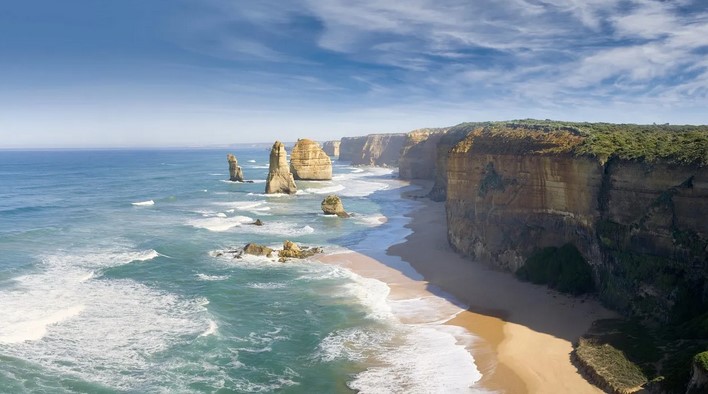
Source : https://i0.wp.com
The beach is a place that evokes a sense of tranquility, adventure, and natural beauty. The crashing waves, the scent of salt in the air, and the feeling of sand between your toes create an atmosphere unlike any other. Whether you’re a frequent beachgoer or a casual visitor, words that describe the beach can help capture the essence of this stunning coastal landscape. In this article, we will explore the diverse and vivid vocabulary that can paint a picture of the beach, covering its physical characteristics, the experiences it offers, and the emotions it evokes.
The Physical Features of the Beach
A beach is a dynamic environment where land meets water, and its features are constantly changing due to the natural forces of wind, tide, and erosion. The use of descriptive words can help convey the variety and richness of the beach landscape.
Sandy Shores
One of the most common images associated with the beach is its sandy shore. Words like “soft,” “powdery,” “golden,” and “warm” are often used to describe the feel and color of the sand. Some beaches have sand that glitters in the sun, giving it a “sparkling” or “glimmering” quality. The texture of the sand can vary, with some beaches offering “coarse” or “rough” sand, while others provide a “silky” or “velvety” experience underfoot.
The shoreline can also be described by the way the sand meets the water. Phrases like “crashing waves,” “gentle surf,” or “lapping tide” can capture the movement of the water as it washes against the shore. The patterns the water creates as it retreats are also worth mentioning. For example, the tide may leave behind “shimmering pools” or “wet, glistening sand” that reflects the sky above.
Rocks, Cliffs, and Other Coastal Features
Not all beaches are made of soft sand. Many coastal landscapes are dominated by rocks, cliffs, and other geological features. In these environments, you might encounter “jagged cliffs,” “towering rock formations,” or “weathered boulders” that rise dramatically from the shore. Describing these features can evoke a sense of awe and grandeur, highlighting the rugged beauty of the coastline.
The sea itself is also an essential part of the beach experience. Descriptive words like “crystal-clear,” “turquoise,” or “emerald” can be used to convey the varying shades of the water. For beaches with rocky shorelines, the water might be described as “deep blue” or “mysterious,” reflecting the depth and majesty of the ocean. In contrast, beaches with shallow waters often evoke a sense of calm and serenity, with words like “calm,” “placid,” and “peaceful” to describe the water’s stillness.
The Atmosphere and Sensory Experience
Beyond the physical characteristics of the beach, words can also help convey the atmosphere and the sensory experience of being by the sea. The beach is a place that engages all of the senses—sight, sound, touch, smell, and even taste. Words that describe the beach can capture the emotions and feelings that this environment invokes.
Sound of the Waves
The sound of the waves crashing against the shore is one of the most distinctive features of the beach. Descriptive words for the waves’ sound include “soothing,” “rhythmic,” “melodic,” or “constant.” For some, the sound is deeply relaxing, while for others, the thunderous roar of large waves can evoke feelings of excitement and awe. Words like “booming,” “thundering,” or “roaring” can capture the power of the ocean in full force, while “gentle,” “whispering,” or “hushed” might describe the soft lullaby of smaller waves.
Scents of the Sea
The beach is also defined by its distinctive smells. The salty “sea breeze” that carries the scent of the ocean is a defining feature of coastal air. You might also smell the “fresh” scent of saltwater or the “briny” aroma of the ocean. For some beaches, there may be a “fragrant” hint of tropical flowers, seaweed, or driftwood. If you’re near a beach that has been influenced by plant life, you may encounter the earthy scent of “damp sand” or the “freshness” of nearby vegetation. These smells can trigger memories of past beach vacations or provide a sense of calm and peace.
Sensory Tactile Experience
The feel of the beach is equally important. Words like “cool,” “smooth,” “soft,” and “gritty” can be used to describe the sensations of walking barefoot on the sand. The texture of the sand is often central to a beach experience—some beaches offer “powdery” sand, while others have a more “coarse” or “grainy” texture. The temperature of the sand can also be described as “warm” or “hot,” depending on the time of day. The sensation of water on your skin can also vary—beaches with clear, shallow water offer a “refreshing” or “crisp” feeling, while deeper waters may feel “cool” and “invigorating.”
Sight and Scenery
The view from the beach is often nothing short of spectacular. The horizon, where the sky meets the sea, is one of the most striking sights at the beach. Words like “endless,” “vast,” and “boundless” describe the vastness of the ocean, which stretches as far as the eye can see. Depending on the beach, the scenery may also include “lush palm trees,” “tropical flora,” or “rugged cliffs” that contrast with the soft sand and sparkling water.
As the sun sets over the ocean, the sky often transforms into a “vibrant” or “fiery” palette of colors, ranging from “golden” to “crimson” or “violet.” The changing light throughout the day can offer a sense of wonder, with the beach landscape appearing to change colors as the sun rises or sets.
Emotions and Experiences at the Beach
The beach is a place where many people feel a deep sense of relaxation, freedom, and connection to nature. Words that describe the beach can also reflect the emotional and personal experiences people have while at the coast.
Relaxation and Peace
The beach is often associated with “calmness” and “peacefulness.” The combination of the soothing sounds, the gentle rhythm of the waves, and the vast, open space can create a deep sense of tranquility. Words like “serene,” “relaxing,” and “idyllic” are commonly used to describe the feelings that arise when spending time at the beach. For many, the beach offers a chance to unwind and escape the stresses of daily life.
Adventure and Exploration
While the beach can be a place for relaxation, it can also offer adventure and excitement. For those who love to surf, kayak, or explore coastal caves, the beach is a playground for the daring. Descriptive words like “wild,” “untamed,” “adventurous,” or “thrilling” can capture the energetic atmosphere of more active beach experiences.
In conclusion, the words that describe the beach serve as a rich and diverse language to capture the essence of this iconic landscape. Whether you’re describing the physical characteristics of sandy shores, the sensory experiences of the sea, or the emotions the beach evokes, there is a vast vocabulary available to paint an accurate and vivid picture of coastal beauty. The beach is more than just a place; it is an experience that speaks to the senses, the soul, and the spirit of adventure. With the right words, we can truly appreciate the wonder and magnificence of the beach and the lasting memories it creates.










